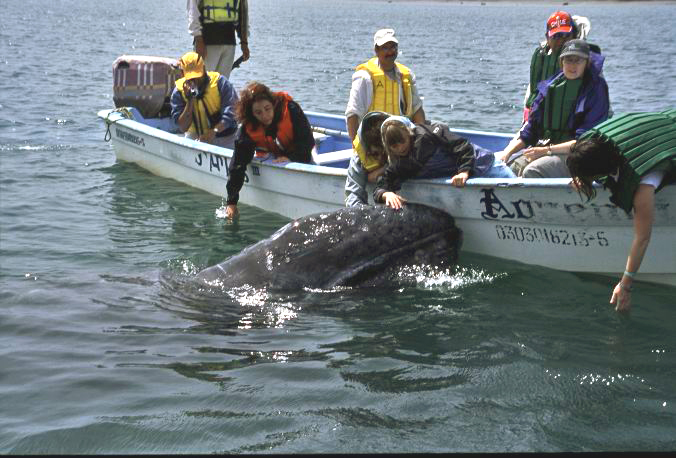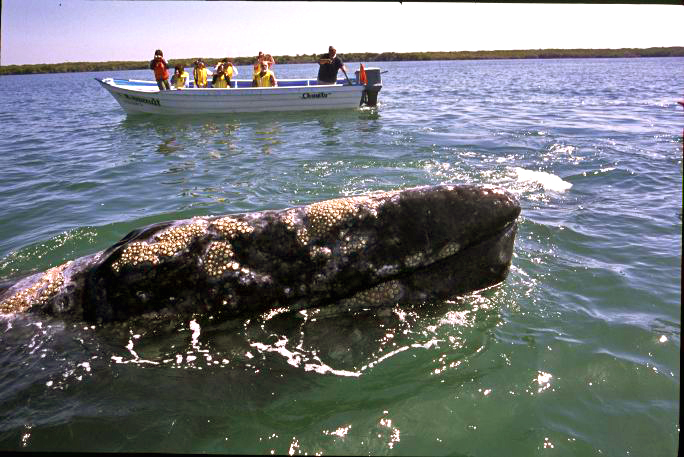
The
WHALES of Magdalena
Bay
By
Jim Moerschel
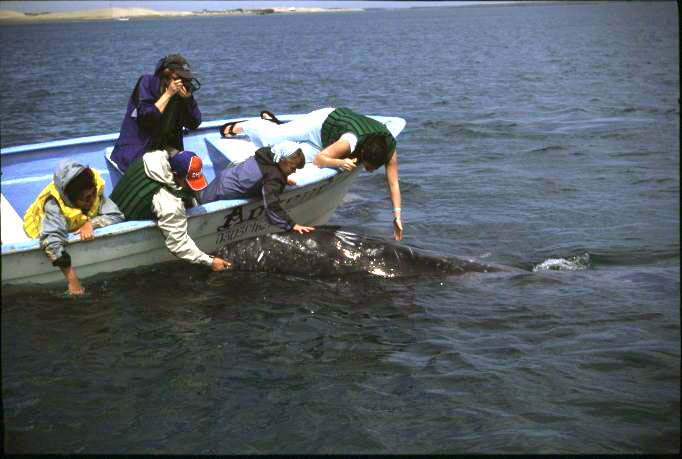
It is a typical March day in the Baja
Peninsula. Bright skies, hot sun, cooling
breezes and we’re seeking adventure. This day is a water trip and
there are
eight of us aboard a 25 foot skiff called a Panga that sits very close
to the surface
of Magdalena Bay. So close in fact that one can easily reach out and splash
the water.
As our boat captain speeds the Panga out into the middle of
the Bay we scan
the horizon for all types of wildlife. There are birds along the shoreline.
Herons,
gulls, pelicans and some tiny shorebirds can be seen. Suddenly, the Captain
slows
the boat and our guide places her hands in the water and begins a circular
splashing motion.
All aboard reach into the azure colored liquid and simulate the movement.
Several minutes pass
and all continue the splashing routine and all eyes are riveted into the
watery depths
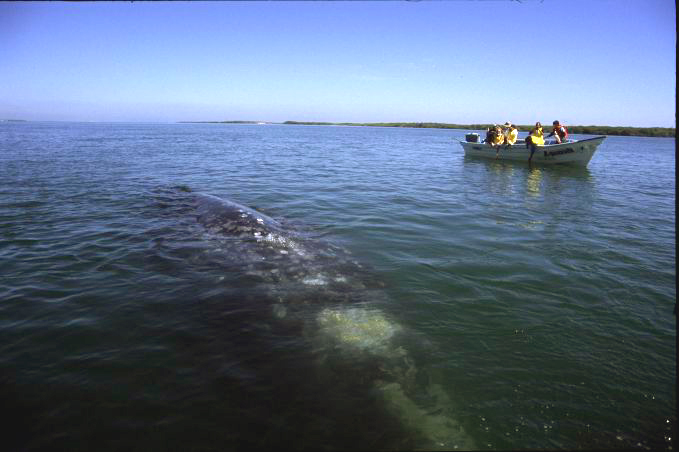
Without warning, a whitish/gray form begins rising from the
deep. Up it comes
like a phantom, slowly and the hulking form is right next to the boat.
Excited voices announce
the arrival as the huge whale breaks the surface not more than ten
feet away, rolls on its side and sprays a large shower of liquid sunshine
from its
blowhole into the panga and upon all its inhabitants. The 30 ton prankster
raises
its head straight up out of the water and its eye checks out the effect
of its shower
spray. Then it disappears somewhere beneath the boat. Welcome to Magdalena
Bay
Whale Watching Tours.
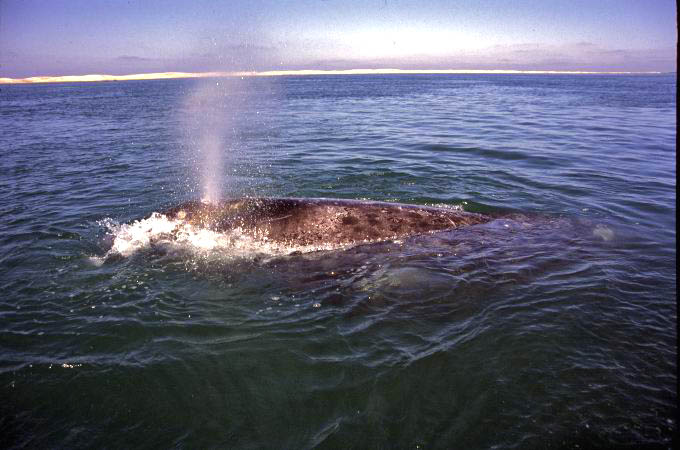
Over the years we have done whale watching trips in Cape
Cod and coastal
Maine from much larger vessels where the experience is more distant and
much
less exciting and personal. Here, in Magdalena Bay is found the whale
watching
experience of a lifetime. Here, we get to pet and scratch the whales,
not just follow
them around.
Each year the California Gray whales, the only members of
the family Eschrichtiidae
that are baleen whales, make the longest known mammal migration
in the world from the frigid waters of Alaska’s Bering Sea 5000
miles south to the
warm waters of the Baja Peninsula, where they seek refuge in several protected
bays on the pacific side.
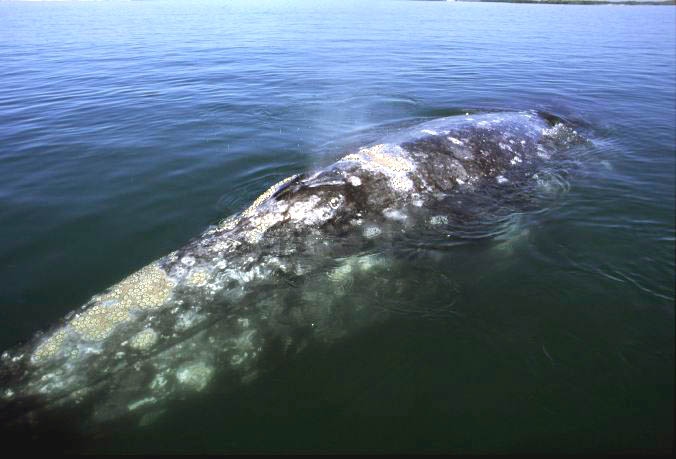
They come here to mate and bear their calves and when the
babies are large
enough to make the journey they leave sometime in mid March to return
to the rich
feeding grounds of Alaska. The females, who may reach a length of 50 feet
and weigh
some 30 tons give birth every other year on average to a single calf.
The baby
feeds on its mothers milk which is extremely rich in fat (53%) allowing
it to gain as much
as 60 pounds per day. This milk is so rich and thick that when the baby
nudges the female to induce a feeding, she squirts this thick formula
right out into the water,
where it appears like a white basketball size glob that the baby simply
sucks right into its large
mouth in one big gulp.
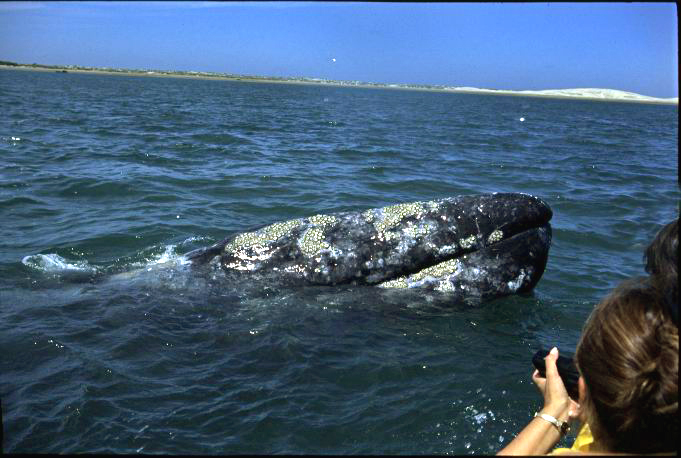
Our boat Captain revs up the outboard and we move about and
we see a few
other pangas not far away. Now I’m fully aware that this photo shoot
is going to be primarily
a wide-angle affair and I set up one body with a 24 – 70 zoom and
the
other with a 28 – 200. Both are safely dangling around my neck on
strong camera
straps. I’m using 100 ISO Provia slide film and the strong midday
sun is very bright allowing
for fast shutter speeds of 250 and 500 to stop the action and prevent
camera shake since I’m handholding from a rocking boat. With most
images being shot at
wide-angle and an fstop of f8, my depth of field is very good that should
ensure lots of sharp
photos despite lots of obstacles
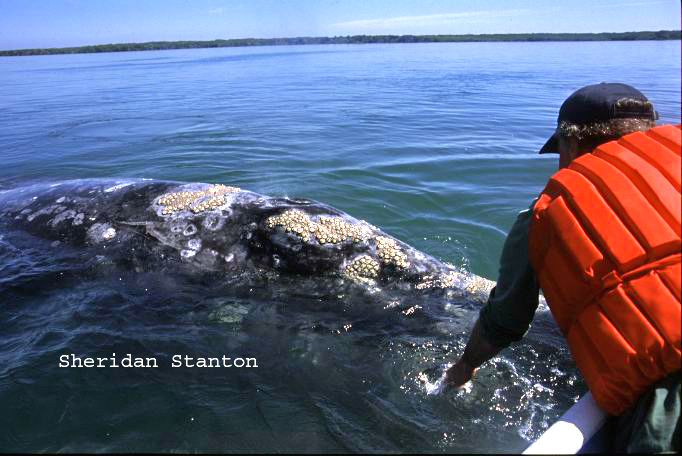
The best position on the panga to take photos was the bow.
Lorraine and I did
this tour twice and on the first trip I sat in the middle of the boat
at its widest where I had to
move from side to side when the whales played hide and seek. And
I was forced to shoot over people onboard from this position, but on the
second trip
I took the bow spot, which afforded several uninterrupted views of the
whales as
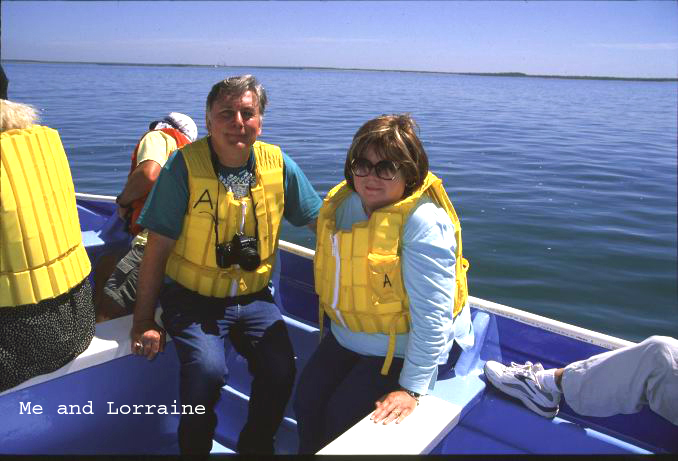
they came up close. So, if you do this trip and photos are your primary
goal take the bow spot.
An important thing to bring is a large plastic garbage bag
to protect your camera bag. Place the
camera gear inside the plastic bag and put it down low in the
boat so it won’t get knocked overboard. I’m not referring
to the whales knocking it
over the side, but rather the frenzied people onboard, who will be rushing
from one side of the
panga to the other playing a giddy, fun filled game of “find the
whale.”
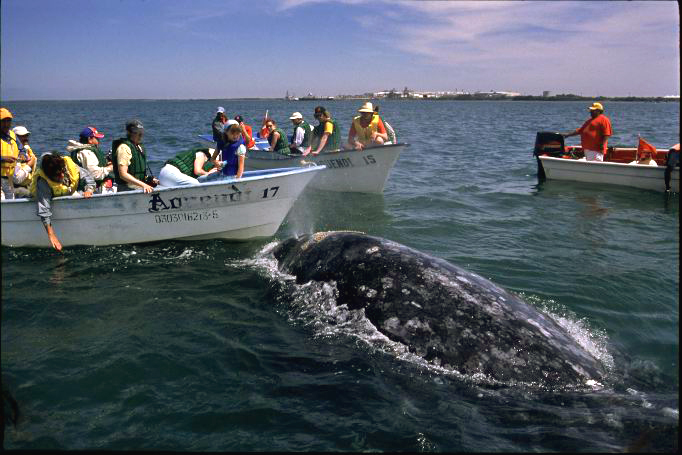
But we didn’t have to wait too long for the whales to
reappear and come in close. They would
go down for about 3 to 5 minutes and then pop right back up and
move in close to the boat, where plenty of eager hands rubbed and scrubbed
and
scratched and petted for several minutes upon the rubbery bodies of these
huge,
but gentle creatures
.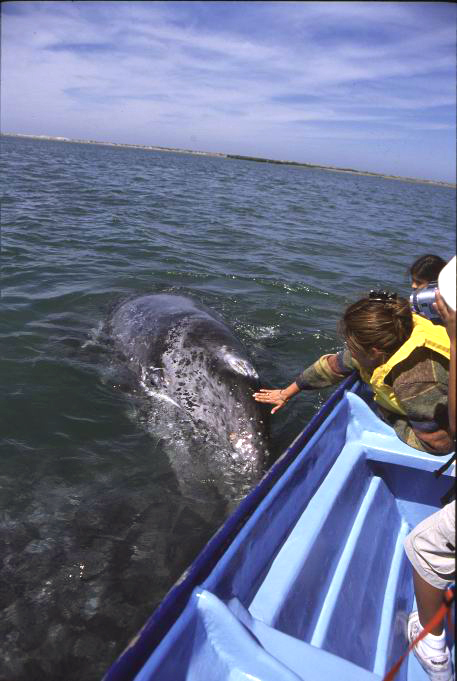
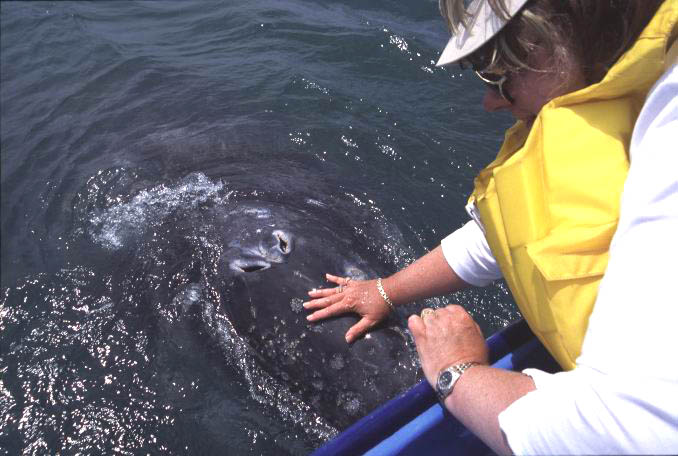
A few times the female would glide right beneath the boat
and her back bumped our
small craft around a bit, causing some concern until our guide tells
us that the female will do this to scrape her “barnacles”
which encrust her back
and head. The baby has no pesty “hitch-hikers” yet, so its
skin is perfectly smooth
and softer than moms.
The most amazing sighting is when the female will go beneath
her baby and push it up a
bit out of the water, right beside the panga to allow the people to see
and pet her new prize. This happens quite often on these trips and many
times one
gets to see both whales at the same time, side by side above water.
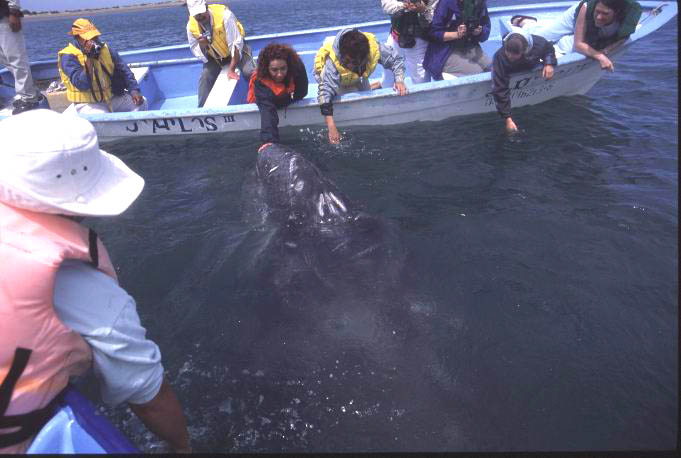
Our boat Captain as all of them are, are experienced and licenced
to make these tours in
the Bay. But every once in awhile with several pangas in close
proximity and Captains and guides eager to make their clients happy, some
close
calls can occur. On our first trip, the female and baby got between our
boat and
another panga that was moving in to be in the middle of the action. Accidently,
this
other boat nudged the baby whale and the mother who was up against our
boat
panicked a bit and gave our boat a wallop, which knocked some of our people
right
to the floor. These creatures are capable with their size and power to
capsize one
of these boats with ease – if they wanted to. But these intelligent,
gentle giants mean
no harm to anyone and amazingly move about the groups of pangas in
such a graceful and careful manner that under normal circumstances it
is a
very safe and rewarding time for all – including the gray whales.
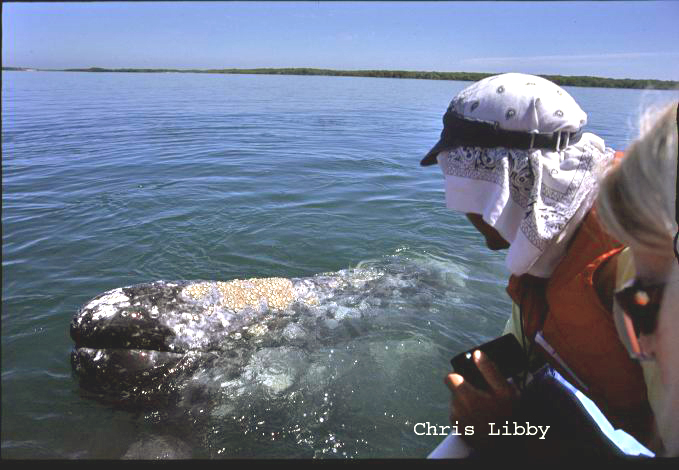
Of course the most exciting moments are when the whales are
right up against
our boat and some really great close images can be made with the wide
angle lens,
but some of the most dramatic scenes can be made of the other pangas right
nearby. This type of scenario happens often as the other boat captains
want to
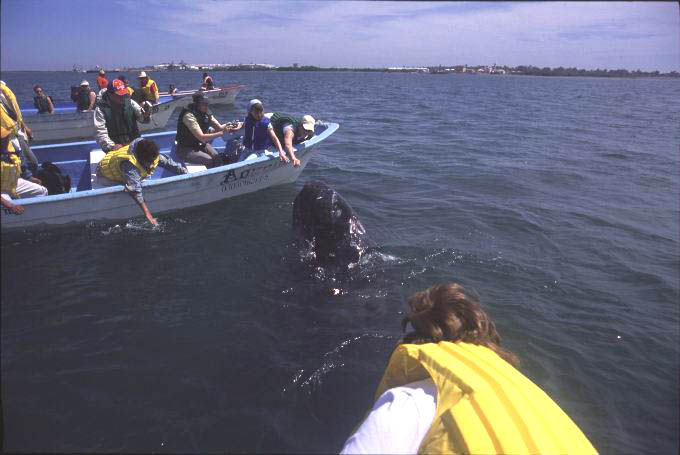
move their clients in close to a whale who is being petted by people on
another
boat. I found that when the whale moved away to the other boats that this
afforded
me the opportunity to use a fine angle of view of the whale with the other
boat
and its “crew” hanging over the side. This is where I zoomed
out from 24mm to
150mm or even the full range of 200 to tighten the composition. With high
shutter
speeds up near 500 I had confidence in handholding a small telephoto.
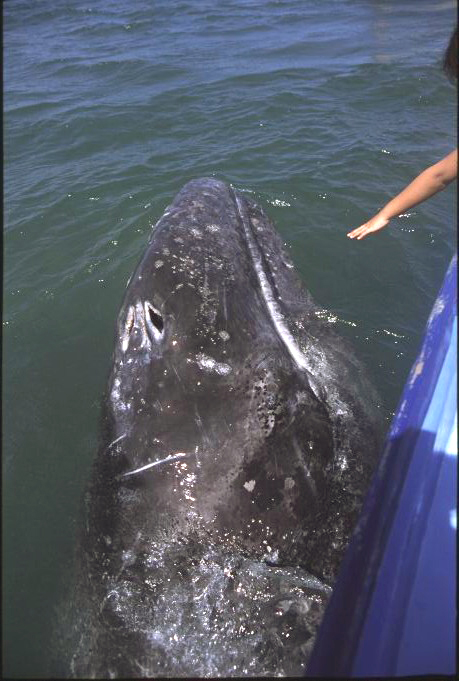
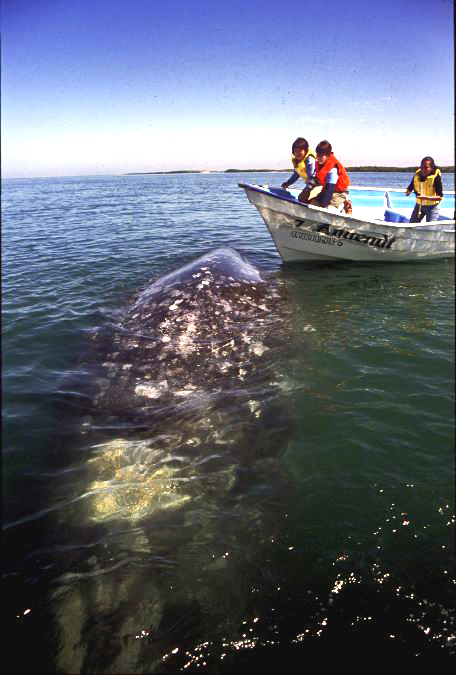
These panga tours leave from a boat dock in the town of Puerto
Lopez Mateos
on the edge of Magdalena Bay. Our trip began from the small town of Loreto,
which is located on the opposite side of the Peninsula right on the Sea
of Cortez.
Our hotel, The Hotel Oasis arranged the tour through a local tour company
and
a van picked us up at 8am and we joined a nice group of enthusiastic adventurers.
It was a two hour journey through cactus country and everyone was chatting
and
getting to know one another.
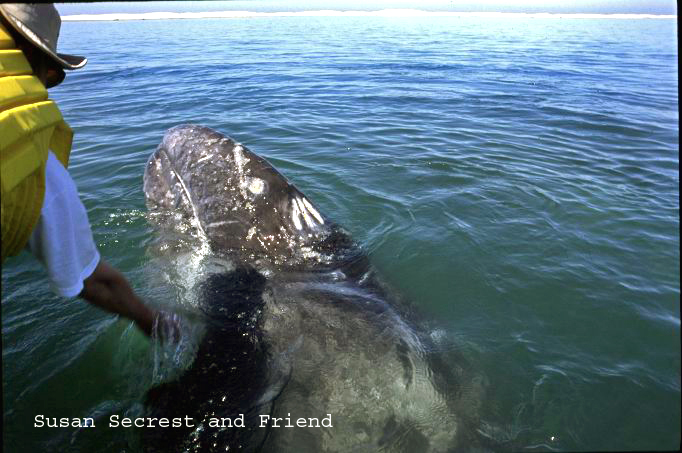
We were a diverse group, but we all had a common thread –
Adventure seekers.
Susan Sechrest, from Las Vegas, who once traveled to Timbouctou on a
mango boat out of Nigeria and slept for 5 nights on top of the cargo of
mangoes
until the Niger River became too shallow, then hitched a ride on a truck,
slept overnight in a Taureg camp and spent several days swishing through
the
desert in a jeep till she reached her fabled destination, provided lots
of fun filled
adventure stories during the ride. So did Chris Libby, a professional
ski instructor,
mountaineer and adventurer, who hails from a town high in the
Sierra Nevada Mountains. Denise O'Driscoll and Sheridan Stanton of Santa
Barbara love the sea.
Sheridan, an avid sport fisherman says, “he won’t eat a fish
unless he sees it swimming
.” Then there was Paul Varady, a retired Biostatistician formerly
of Los Angeles, who has been living in San Jose del Cabo for the past
five years.
Paul loves the unhurried and simple life of small towns like Loreto in
sunny
Baja.
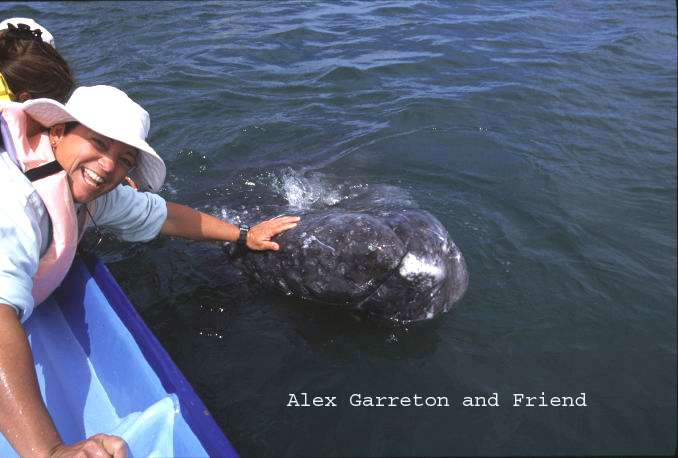
Our second whale trip was organized in the town of La Paz
from our
hotel, La Concha Beach Resort. The drive is an hour longer than it was
from Loreto, but still worth the cactus watching. During the three hour
drive, we had the pleasure of meeting Alexandra Garreton, who hails from
Phoenix and is an avid world traveler. The rest of the group was made
up
of the Figueroa Family, who lives in Mexico City and was vacationing in
the Baja region. The two energetic children, Erick and Mariana, quickly
won our hearts and added so much enjoyment to the days experience.
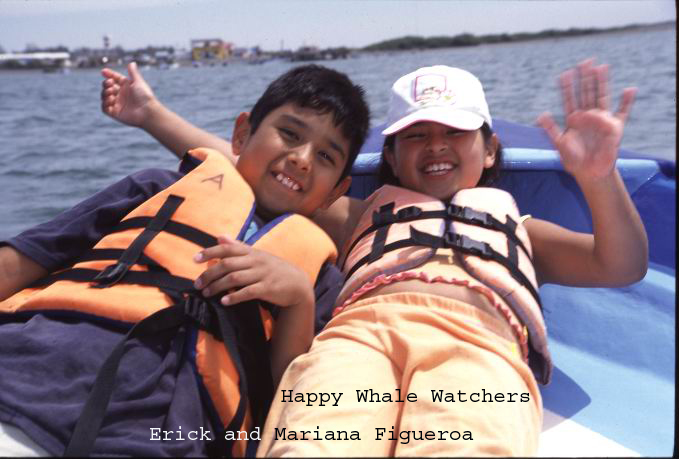
When we finally arrived in the small fishing village of Puerto
Lopez Mateos
we signed in at the registration building, were fitted with snug lifejackets
and
walked to the dock where out panga was waiting. After the two hour whale
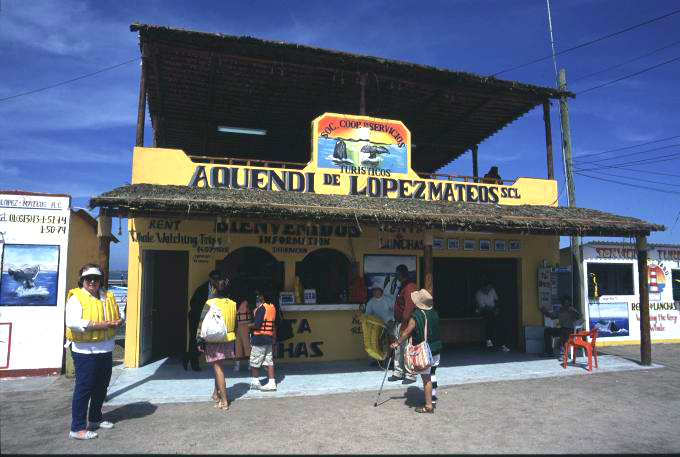
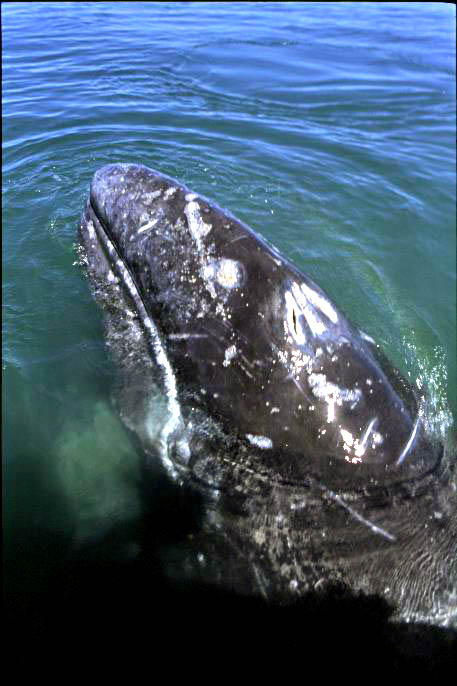
adventure we were driven to a local restaurant and served a very fine,
tasty
Mexican meal. Then it was back in the van to make the journey back through
the
scenic desert to the other side of the Sea of Cortez. The cost of this
entire
organized day trip is $106 per person, which includes the van transportation,
2 hour whale trip on a panga, meal at local restaurant and transport back
You can drive to Puerto Lopez Mateos yourself if you have
a car, but
you may have to “hook up” with other people to form a group
as most of
the boat captains would like to take at least 6 whale watchers at a time.
This would cut the cost of the panga trip to around $60 per person, but
we
felt that meeting all our new travel companions was well worth the extra
few dollars and have a group already formed.
